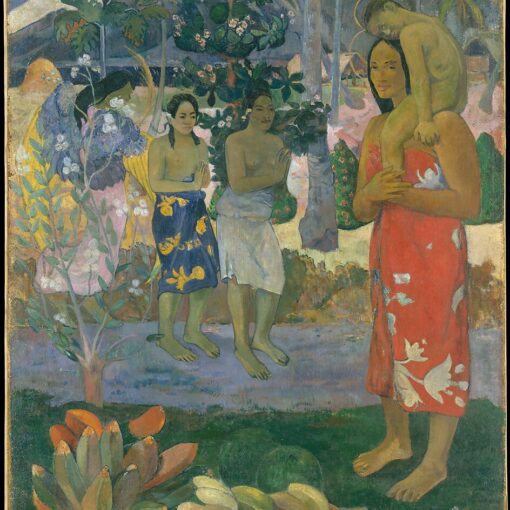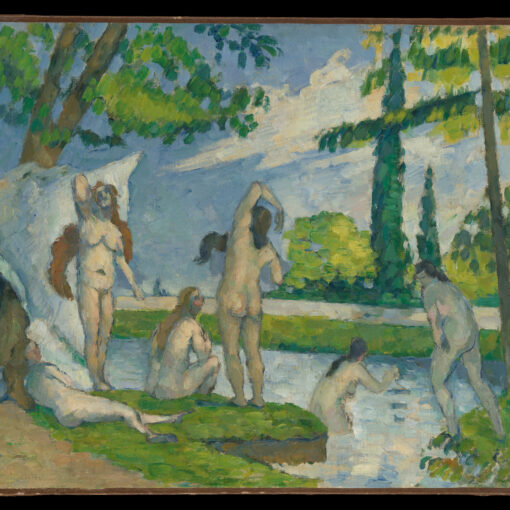
Cypresses, Vincent Van Gogh, 1889
By Brandon
Cypresses is a painting by Vincent Van Gogh. It was created in late June of 1889. The painting is done on canvas with the use of oil paint. Van Gogh incorporated the technique of impasto, making the paint applied to have a thick consistency to create a textured surface. The Cypress tree stands out the most from its height being the tallest in painting—the use of deep green with light green and yellow colors on the tree. Black shading outlines the tree and looking closer there’s white and brown on the tree. There’s the use of horizontal and vertical lines on the tree, enhancing the three-dimensional quality. Swirl lines used in the sky create a rhythm that indicates a sense of motion. Light blue color mixed with white gives it a clear visual of the sky with clouds. The crescent moon on the top right is popping out in the sky. The tone being used in the sky of the cypress tree is warm and low intensity. The hill behind uses navy blue with wavy green lines present. Looking at the wind blowing the grass. The grass around the tree is mustard yellow with a mix of light green brown and white. The white depicts white lilies. The colors are vivid with the way the brushstrokes make it look.
These elements helped me understand the emotional and artistic connection. The way van Gogh included color, lines, shape, and texture. The struggles being portrayed in the painting resonates with viewers. The painting was created shortly after Van Gogh began his yearlong stay at the asylum in Saint-Remy. A cypress tree is associated with an eternity of human life and death. Van Gogh was inspired and became attracted to the cypress tree. “Beautiful as regards lines and proportions, like an Egyptian obelisk” is how van Gogh describes the cypress tree.
What I find interesting about the painting is the way it looks. On the Met website, it states” If you let your eye follow one curve or silver painted on the canvas, it seems like you could follow it around the whole painting. It’s as though Van Gogh painted the entire scene with one stroke of his paintbrush.’’ The painting automatically grabbed my attention from the first sight. There is so much to look at and understand the meaning behind. Post-Impressionists reflect the movement’s emotional depth. With uses of color and form, Van Gogh brought a new personal expression to the painting. Learning more about van Gogh and Cypresses, made me begin to appreciate more the art he created and the influence it has had on the art world with his creation.



